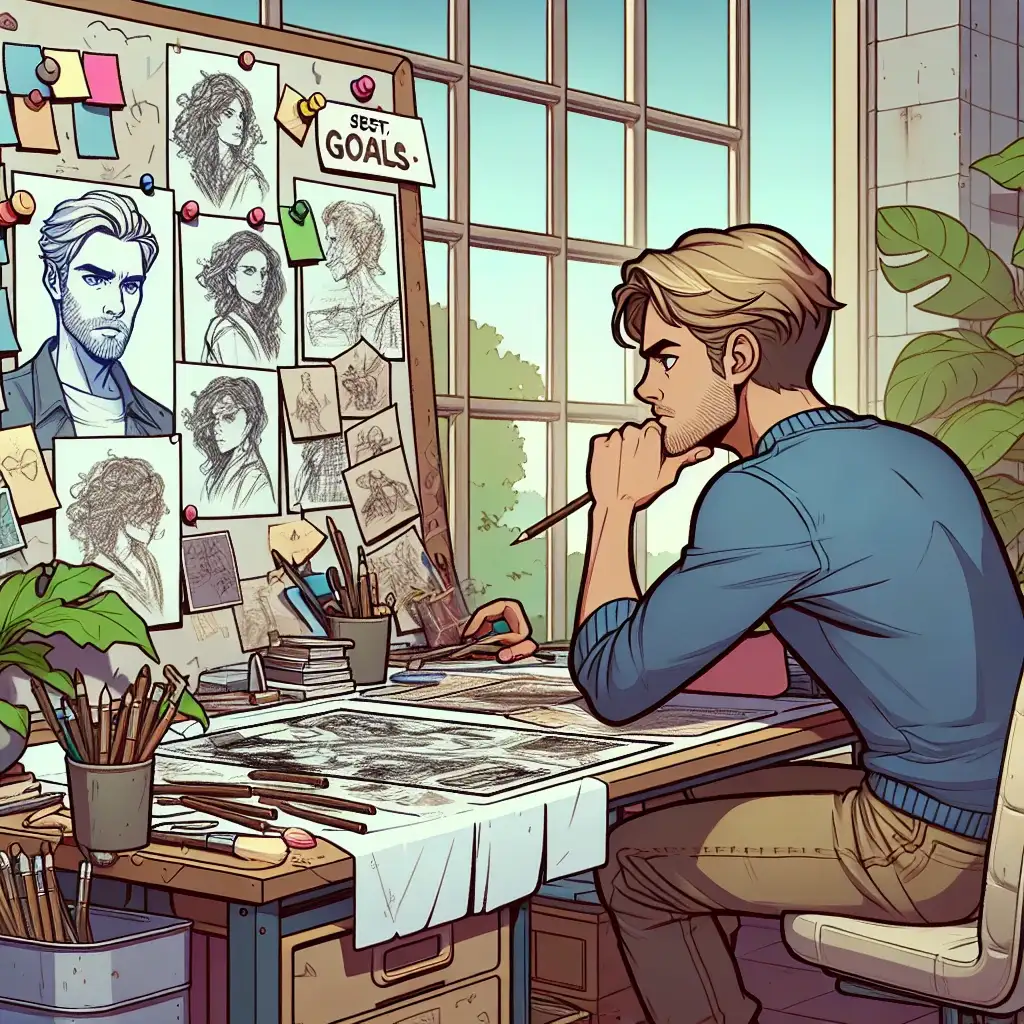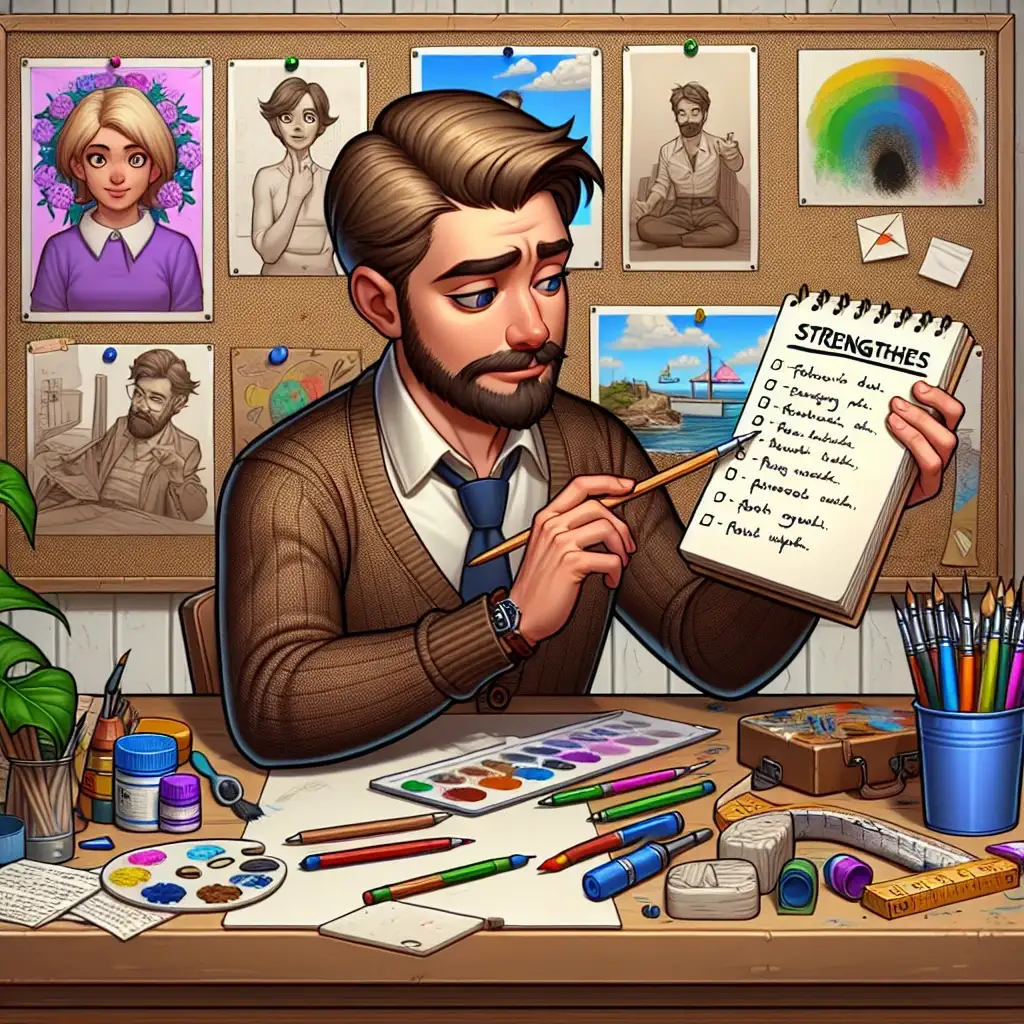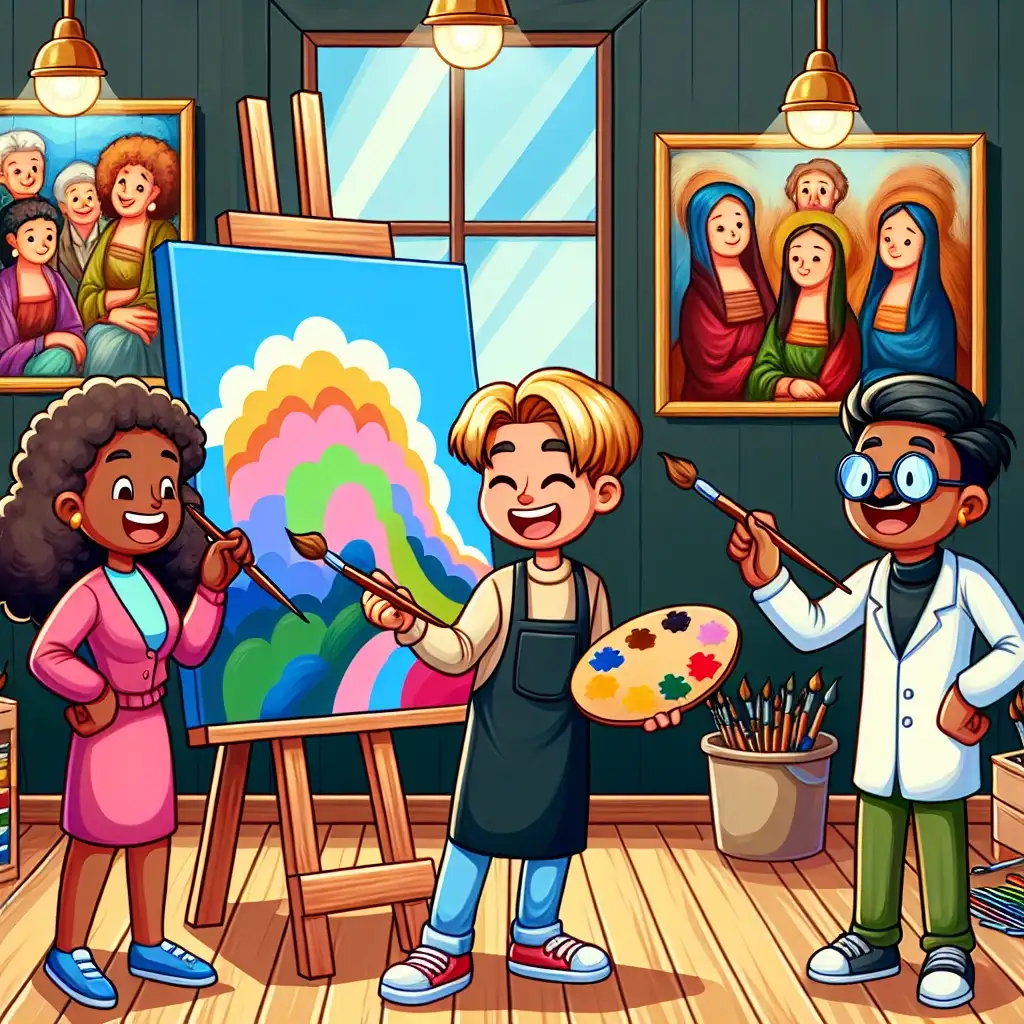Are you looking to take your artistic skills to the next level? Self-critique is a powerful tool that can help you grow and improve as an artist. By learning how to objectively assess your own work, you can identify strengths to build upon and weaknesses to address. This process of self-reflection allows you to push yourself creatively, experiment with new techniques, and ultimately produce more compelling and impactful art. In this article, we will explore the benefits of self-critique and provide practical tips on how to effectively evaluate your own work. Whether you’re a seasoned artist or just starting out on your creative journey, mastering the art of self-critique can lead to significant growth and development in your craft.

Start with a clear vision
Before beginning any artwork, take a moment to visualize what you want to create. Consider the style, colors, and emotions you want to convey. Having a clear vision will help you stay focused and make decisions that align with your goals.
Set achievable milestones
Break down your overall artistic goal into smaller, achievable milestones. This could be mastering a specific technique, experimenting with a new medium, or completing certain parts of the artwork. By setting achievable milestones, you'll feel a sense of progress and accomplishment throughout the creative process.
Define success criteria
Establish specific criteria that will define the success of your artwork. This could include elements like composition, color harmony, brushwork, or emotional impact. Clearly outlining what success looks like will give you a roadmap to assess your work and make improvements.
Seek inspiration from others
Look to other artists, galleries, museums, or online resources for inspiration and ideas. Observing different styles and techniques can spark creativity and help you refine your own artistic voice. Be open to learning from others and incorporating new concepts into your work.
Challenge yourself creatively
Push yourself out of your comfort zone by trying new approaches, styles, or subjects in your artwork. Embrace experimentation and don't be afraid to make mistakes – they can lead to unexpected breakthroughs. By challenging yourself creatively, you'll continue to grow and evolve as an artist.
Reflect and adjust as needed
After completing each artwork, take time to reflect on what went well and what could be improved. Be honest with yourself and identify areas where you can grow. Use this self-critique process to adjust your goals, techniques, and creative direction for future artworks.

Self-Reflection
Take a moment to reflect on your artwork with a critical eye. Consider the elements such as composition, color, and technique. Ask yourself what aspects of the piece you are proud of and what areas could use improvement.
Seek Feedback️
Share your artwork with trusted friends, peers, or online communities and ask for constructive feedback. Listen attentively to their comments and suggestions. Consider how their perspectives align with your own self-assessment.
Compare and Contrast
Study the work of other artists in your field. Compare their techniques, styles, and approaches to your own. Identify what sets your work apart and areas where you can learn and grow.
Set Goals and Action Plans
Based on your self-reflection and feedback, establish specific goals to enhance your artistic skills. Create actionable steps to address your weaknesses and leverage your strengths. Monitor your progress regularly and adjust your plans as needed.

Seek out constructive criticism
Don't be afraid to ask for feedback from individuals whose opinion you trust and value. Seek out constructive criticism that can help you identify areas for improvement in your artwork. Remember, the goal is growth and progress, so embrace feedback as a tool for development.
Be open-minded and receptive
Approach feedback with an open mind and a willingness to learn. Be receptive to different perspectives and ideas, even if they challenge your existing beliefs about your art. Embracing diverse feedback can provide you with fresh insights and help you see your work from new angles.
Ask specific questions
When seeking feedback, ask specific questions about aspects of your artwork that you're unsure about. Whether it's about color choices, composition, or technique, targeted questions can elicit more focused and helpful responses. This approach can guide the feedback towards areas where you truly want to improve.
Listen without defensiveness
Practice active listening during feedback sessions and resist the urge to become defensive. Remember that the goal is to gather insights that can help you enhance your artistic skills. Approach feedback with a mindset of curiosity and a willingness to consider different viewpoints.
Reflect on the feedback
After receiving feedback, take some time to reflect on the comments and suggestions you've received. Consider how you can apply the feedback to your future artwork and what changes you may want to implement. Reflective practice can help you internalize the feedback and turn it into actionable steps for improvement.
Express gratitude and follow up
Show appreciation to those who took the time to provide you with feedback on your art. Express gratitude for their insights and let them know how their feedback has helped you grow as an artist. Consider following up with them in the future to share your progress and continue the feedback loop.
In conclusion, self-critique is a powerful tool that can help you improve your artistic skills significantly. By developing a critical and analytical eye towards your own work, you can identify areas for improvement, set goals for growth, and ultimately elevate the quality of your art. Make self-critique a regular part of your creative process by approaching each piece with curiosity, openness, and a willingness to learn. Remember to be kind to yourself and celebrate your progress along the way. With dedication and practice, you will cultivate a deeper understanding of your craft and develop your unique artistic voice. Embrace the journey of self-discovery and refinement, and watch as your skills flourish and your creativity soars to new heights.